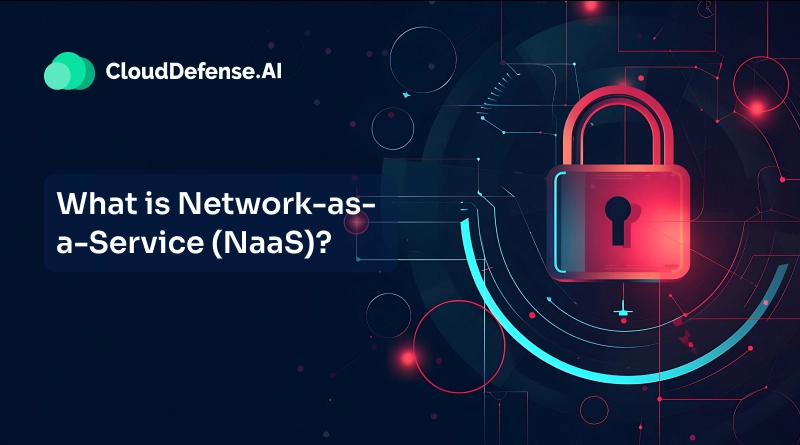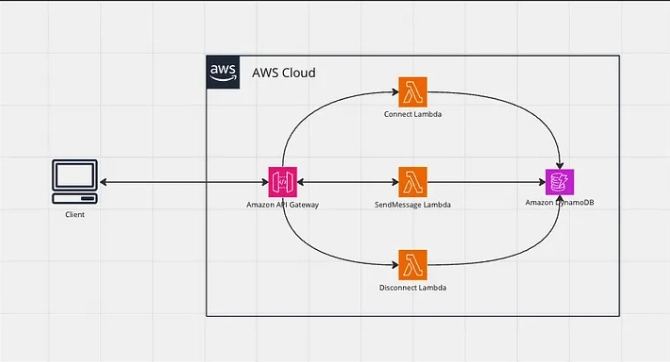What is Network-as-a-Service (NaaS)?
Managing modern enterprise networks no longer needs to rely on heavy infrastructure and complex hardware. Network-as-a-Service (NaaS) has emerged as a flexible, cloud-driven solution that enables businesses to scale, secure, and optimize their networks without the overhead of traditional systems. By offering on-demand access to networking capabilities, NaaS is rapidly becoming the preferred model for organizations seeking agility and efficiency. What Is NaaS and How Does It Work? Network-as-a-Service is a subscription-based offering where businesses lease networking functions—such as routing, firewalls, and load balancing—from a cloud provider. Rather than deploying and managing hardware on-premises, organizations connect to a virtual network environment that’s maintained and operated externally. Providers typically offer varying levels of service: Rented equipment, where customers manage the setup Managed services, where the vendor oversees operations Full-service NaaS, with complete vendor management from deployment to monitoring This enables seamless integration of cloud-native capabilities into enterprise IT infrastructure. The Evolution Behind NaaS The rise of NaaS stems from the need to modernize legacy network architectures. Traditional wide-area networks (WANs) relied on expensive setups and VPNs that struggled with today’s cloud-based workloads. As digital operations grew more distributed, managing internal networks became cumbersome. Cloud computing paved the way for virtual firewalls, traffic routing, and advanced security—all accessible remotely. NaaS represents this evolution, delivering network functionality as a scalable, service-based model. Key Benefits of NaaS Lower Capital Investment: Reduces upfront costs by eliminating the need for hardware purchases. Minimal Maintenance: Offloads infrastructure upkeep to providers, freeing internal IT resources. High Flexibility: Enables quick configuration changes through software-based controls. Scalable Architecture: Easily expand bandwidth and services without physical upgrades. Integrated Security: Security features like DDoS protection and firewalls are often built in. Remote Accessibility: Supports global access without relying solely on VPNs. Considerations and Challenges Adopting NaaS isn’t without challenges. Compatibility with existing infrastructure, potential dependency on vendors, and transitioning from legacy systems require careful planning. However, these can be mitigated with the right partner and phased implementation. The Role of SASE When combined with Secure Access Service Edge (SASE), NaaS offers even stronger control and security across cloud applications and distributed networks. Together, they deliver streamlined access and enforce security policies at the edge. Final Thought As businesses aim for agility and cost efficiency, NaaS is leading the charge in modernizing enterprise connectivity. It not only streamlines operations but also enhances network security and performance—making it a strategic investment in today’s digital-first environment.


Managing modern enterprise networks no longer needs to rely on heavy infrastructure and complex hardware. Network-as-a-Service (NaaS) has emerged as a flexible, cloud-driven solution that enables businesses to scale, secure, and optimize their networks without the overhead of traditional systems. By offering on-demand access to networking capabilities, NaaS is rapidly becoming the preferred model for organizations seeking agility and efficiency.
What Is NaaS and How Does It Work?
Network-as-a-Service is a subscription-based offering where businesses lease networking functions—such as routing, firewalls, and load balancing—from a cloud provider. Rather than deploying and managing hardware on-premises, organizations connect to a virtual network environment that’s maintained and operated externally.
Providers typically offer varying levels of service:
- Rented equipment, where customers manage the setup
- Managed services, where the vendor oversees operations
- Full-service NaaS, with complete vendor management from deployment to monitoring
This enables seamless integration of cloud-native capabilities into enterprise IT infrastructure.
The Evolution Behind NaaS
The rise of NaaS stems from the need to modernize legacy network architectures. Traditional wide-area networks (WANs) relied on expensive setups and VPNs that struggled with today’s cloud-based workloads. As digital operations grew more distributed, managing internal networks became cumbersome. Cloud computing paved the way for virtual firewalls, traffic routing, and advanced security—all accessible remotely. NaaS represents this evolution, delivering network functionality as a scalable, service-based model.
Key Benefits of NaaS
- Lower Capital Investment: Reduces upfront costs by eliminating the need for hardware purchases.
- Minimal Maintenance: Offloads infrastructure upkeep to providers, freeing internal IT resources.
- High Flexibility: Enables quick configuration changes through software-based controls.
- Scalable Architecture: Easily expand bandwidth and services without physical upgrades.
- Integrated Security: Security features like DDoS protection and firewalls are often built in.
- Remote Accessibility: Supports global access without relying solely on VPNs.
Considerations and Challenges
Adopting NaaS isn’t without challenges. Compatibility with existing infrastructure, potential dependency on vendors, and transitioning from legacy systems require careful planning. However, these can be mitigated with the right partner and phased implementation.
The Role of SASE
When combined with Secure Access Service Edge (SASE), NaaS offers even stronger control and security across cloud applications and distributed networks. Together, they deliver streamlined access and enforce security policies at the edge.
Final Thought
As businesses aim for agility and cost efficiency, NaaS is leading the charge in modernizing enterprise connectivity. It not only streamlines operations but also enhances network security and performance—making it a strategic investment in today’s digital-first environment.




























![[Webinar] AI Is Already Inside Your SaaS Stack — Learn How to Prevent the Next Silent Breach](https://blogger.googleusercontent.com/img/b/R29vZ2xl/AVvXsEiOWn65wd33dg2uO99NrtKbpYLfcepwOLidQDMls0HXKlA91k6HURluRA4WXgJRAZldEe1VReMQZyyYt1PgnoAn5JPpILsWlXIzmrBSs_TBoyPwO7hZrWouBg2-O3mdeoeSGY-l9_bsZB7vbpKjTSvG93zNytjxgTaMPqo9iq9Z5pGa05CJOs9uXpwHFT4/s1600/ai-cyber.jpg?#)











































































































































![[The AI Show Episode 144]: ChatGPT’s New Memory, Shopify CEO’s Leaked “AI First” Memo, Google Cloud Next Releases, o3 and o4-mini Coming Soon & Llama 4’s Rocky Launch](https://www.marketingaiinstitute.com/hubfs/ep%20144%20cover.png)





























































































































![[FREE EBOOKS] Machine Learning Hero, AI-Assisted Programming for Web and Machine Learning & Four More Best Selling Titles](https://www.javacodegeeks.com/wp-content/uploads/2012/12/jcg-logo.jpg)








































































![Rogue Company Elite tier list of best characters [April 2025]](https://media.pocketgamer.com/artwork/na-33136-1657102075/rogue-company-ios-android-tier-cover.jpg?#)








































































_Andreas_Prott_Alamy.jpg?width=1280&auto=webp&quality=80&disable=upscale#)





























































































![What’s new in Android’s April 2025 Google System Updates [U: 4/18]](https://i0.wp.com/9to5google.com/wp-content/uploads/sites/4/2025/01/google-play-services-3.jpg?resize=1200%2C628&quality=82&strip=all&ssl=1)










![Apple Watch Series 10 Back On Sale for $299! [Lowest Price Ever]](https://www.iclarified.com/images/news/96657/96657/96657-640.jpg)
![EU Postpones Apple App Store Fines Amid Tariff Negotiations [Report]](https://www.iclarified.com/images/news/97068/97068/97068-640.jpg)
![Apple Slips to Fifth in China's Smartphone Market with 9% Decline [Report]](https://www.iclarified.com/images/news/97065/97065/97065-640.jpg)


































































































































